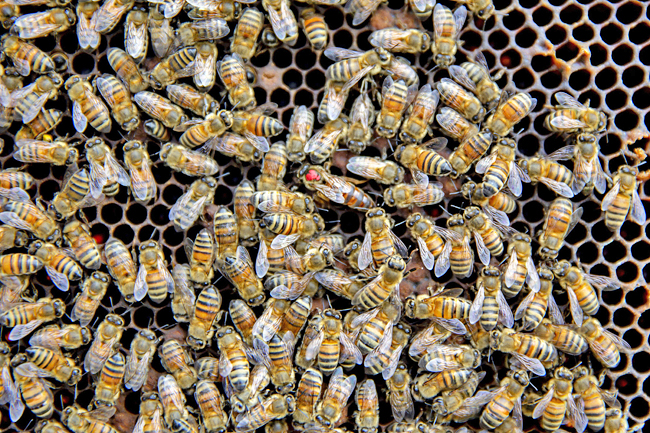Coco Liu
BLOOMBERG – In the perennial search for a viable queen honeybee, many United States (US) beekeepers replenish their supplies each autumn. But meeting that demand is increasingly difficult: Honeybee populations are in decline, partly due to climate change.
Colony health largely depends on queens, and most US queen producers are located in California, where rising temperatures and wildfires are becoming the new norm.
A new peer-reviewed study in the Journal of Apicultural Research presents one possible solution in refrigerated “queen banking” – essentially keeping excess queen bees in temperature-controlled summer housing.
Scientists from Washington State University compared bee survival rates across 18 “queen banks”, roughly half of which were stored in a 20-foot temperature-controlled cargo container at 15 degrees Celsius; the other half were kept outdoors in Northern California, where summer highs can reach 42 degrees Celsius.
The researchers found that about 78 per cent of the queen honeybees survived six weeks of storage in the refrigerated container, compared with roughly 62 per cent of those kept outdoors. The temperature-controlled bees also required less human care, and the study identified no significant differences in the quality of the remaining bees in both groups.

“This is a neat approach to queen banking,” said Scott McArt, an assistant professor at Cornell University who is not involved with the study. “Poor queens are one of the biggest problems in beekeeping today, so novel tactics like this could greatly help improve the country’s beekeeping industry.”
Bee solutions like these matter for humans, too. Experts say traditional outdoor queen banking could become a challenge once temperatures reach 37.8 degrees Celsius, for example, and roughly two thirds of the world’s crops require the service of honeybees and other pollinators.
Scientists are scrambling to reverse the impacts of habitat loss, toxic pesticides and changing climate conditions on various species of wild bees, including bumblebees. Even honeybees under the care of commercial beekeepers are affected: In the US alone, beekeepers lost an estimated 39 per cent of their honeybee colonies over the 12 months ending in April 2022, according to an annual survey.
“A lot of honey bee losses are queen-quality issues,” said Brandon Hopkins, the study’s co-author and an assistant research professor at Washington State University, in a press release on Monday.
“If we have a method that increases the number of queens available or the stability of queens from year to year, then that helps with the number of colonies that survive winter in a healthy state.”







